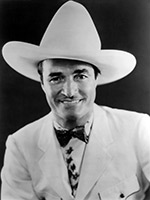Charles Mingus: Goodbye Pork Pie Hat (1959)
 The late 1950s have been important years for music. And, as far as I’m concerned (with some exceptions) this is the apex of Jazz: later on, other music was much more relevant. Some great musicians produced some of their best stuff at this time: Miles Davis is a good example, Mingus is another. By 1959 he was already a star bass player (who had played with many of the greats, including Charlie Parker) and composer, one of those who was taking Jazz into new territory. However, his Mingus Ah Um album (where this track comes from) is a return to the roots of African American music, with many references to Gospel and Blues.
The late 1950s have been important years for music. And, as far as I’m concerned (with some exceptions) this is the apex of Jazz: later on, other music was much more relevant. Some great musicians produced some of their best stuff at this time: Miles Davis is a good example, Mingus is another. By 1959 he was already a star bass player (who had played with many of the greats, including Charlie Parker) and composer, one of those who was taking Jazz into new territory. However, his Mingus Ah Um album (where this track comes from) is a return to the roots of African American music, with many references to Gospel and Blues.
Goodbye Pork Pie Hat is… a melody, literally: a simple, touching, very intense song, dedicated to sax player Lester Young, who had just passed away (and liked to wear a Pork Pie hat). The pace is very slow, and the tune is played very softly, the way Pres (Young’s nickname, the President) would have played it. The solos also convey this somber atmosphere, and the staccato sax part by John Handy at 1’48” is truly a piece of wonder (his solo in this tune☊ is highly considered among sax players).

The album cover with an illustration by S. Neil Fujita.
As it happens with marvelous melodies, there are a million renditions of this one (having become a Jazz standard). Some excellent, other obvious, a few truly dreadful. The most famous is Joni Mitchell’s☊ (from her 1979 album titled Mingus). The two collaborated briefly at the end of his life, and she wrote very poetic lyrics to this tune – in vocalese style: she sang the solos as well as the melody, and her rendition of John Handy’s part is a wonder (with Jaco Pastorius, another great player gone too early, providing an amazing bass part). Another famous cover is Jeff Beck’s (from his 1976 album Wired). His version makes perfect sense: Goodbye Pork Pie Hat is a blues, and he plays it very bluesy. Unfortunately the arrangement is also quite fusion, and it sounds horribly dated today. But the guitar part still makes a lot of sense. Especially if compared to the million fusionista covers of this particular cover. You don’t believe me? Listen to Derek Sherinian’s version☊, where he plays monster synth guitar against Steve Lukather (from Toto) playing monster guitar (side note: drummer Simon Phillips manages to be amazing anyway, and this version is worth listening to just to hear the way he carries the beat in the finale).
buy from amazon • buy from itunes • play on spotify
Lyle Lovett: Long Tall Texan (1996)

Actor Tom Mix, with his customary 10 gallon hat.
I love music when it makes me move and laugh at the same time. In the 1950s there was a whole genre, called Novelty, with funny lyrics and swinging beats. Long Tall Texan is a 1959 country song written in that vein (by Henry Strzelecki, who went on to play bass with Country giant Chet Atkins). It mocks a particular kind of texan: the long, tall type, with a big wide horse and a ten-gallon hat, who enforces justice for the law. Side note: I live in Amsterdam, where we have long tall dutch cops, who enforce justice riding big ass dutch horses – in tiny little alleys. Every time I see one, I think of this song.
The first version I’ve heard is from Lyle Lovett’s 1996 album The Road To Ensenada, where he sang it in duet with Randy Newman. But the song has a long history: recorded first by The Four Flickers☊ in 1959, it was covered by Jerry Woodard☊ in 1960. The Beach Boys picked it up☊ in 1964, and included it in their live seventh album Beach Boys Concert.
Fast forward to 1996, and to the version I discovered first (that you can buy following the links below). Which is very cool, but then I found this fantastic live version, almost identical, without Newman but with Lovett’s amazing live band. The back vocal quartet includes “Sweet Pea” Atkinson, a great soul singer on his own, vocalist (and Man with the fedora hat♾) of one of the strangest Pop bands ever, Was (not was). They play it slower than the album version, letting Lovett’s deadpan texas humor shine. The vocal/horns arrangement in the finale is priceless (but way too short).
buy from amazon • buy from itunes • play on spotify
PS: The amazing drummer with Lovett’s band is Dan Tomlinson.
Randy Newman: You Can Leave Your Hat On (1972)
 As I wrote elsewhere in here, Randy Newman often writes songs for other people to shine. It’s certainly the case of You Can Leave Your Hat On, that everyone considers to be Joe Cocker’s (and associates with the 1986 film Nine 1/2 weeks). But this is a much older tune, included in Newman’s fourth album Sail Away (a masterpiece, if you as me). Listen to the original (much slower and drunken), and you’ll know why I think this song was the wrong choice for the movie: You Can Leave Your Hat On is not the soundtrack for a mild sexy scene♾ (although, after the movie, it became the music of choice for corny strip tease). It is a song of desperate desire, much more Bukowski than Mickey Rourke or Kim Basinger will ever be.
As I wrote elsewhere in here, Randy Newman often writes songs for other people to shine. It’s certainly the case of You Can Leave Your Hat On, that everyone considers to be Joe Cocker’s (and associates with the 1986 film Nine 1/2 weeks). But this is a much older tune, included in Newman’s fourth album Sail Away (a masterpiece, if you as me). Listen to the original (much slower and drunken), and you’ll know why I think this song was the wrong choice for the movie: You Can Leave Your Hat On is not the soundtrack for a mild sexy scene♾ (although, after the movie, it became the music of choice for corny strip tease). It is a song of desperate desire, much more Bukowski than Mickey Rourke or Kim Basinger will ever be.
buy from amazon • buy from itunes • play on spotify
Runner ups
Prince: Raspberry Beret (1985) He’s not online (unless you pay), so you don’t get to hear the song. But you can listen to a million covers☊ of this popular tune, and read the song’s Wikipedia entry.
Steely Dan: The Fez (1976) “I’m never gonna do it without the Fez on” is, apparently, all we need to know, as we groove to this slick, somewhat middle eastern tune. (Again, the song is not on Youtube. The best I could find is this guy, playing bass along the original♾, in a room with too much furniture.)
Marvin Gaye: Wherever I Lay My Hat (That’s My Home)☊ (1962) The original anthem for men on the road.
Fred Astaire: Top Hat, White Tie and Tails♾ (1935) Irving Berlin‘s celebration of formal wear, from the hit movie Top Hat, in crisp 1930s black and white.